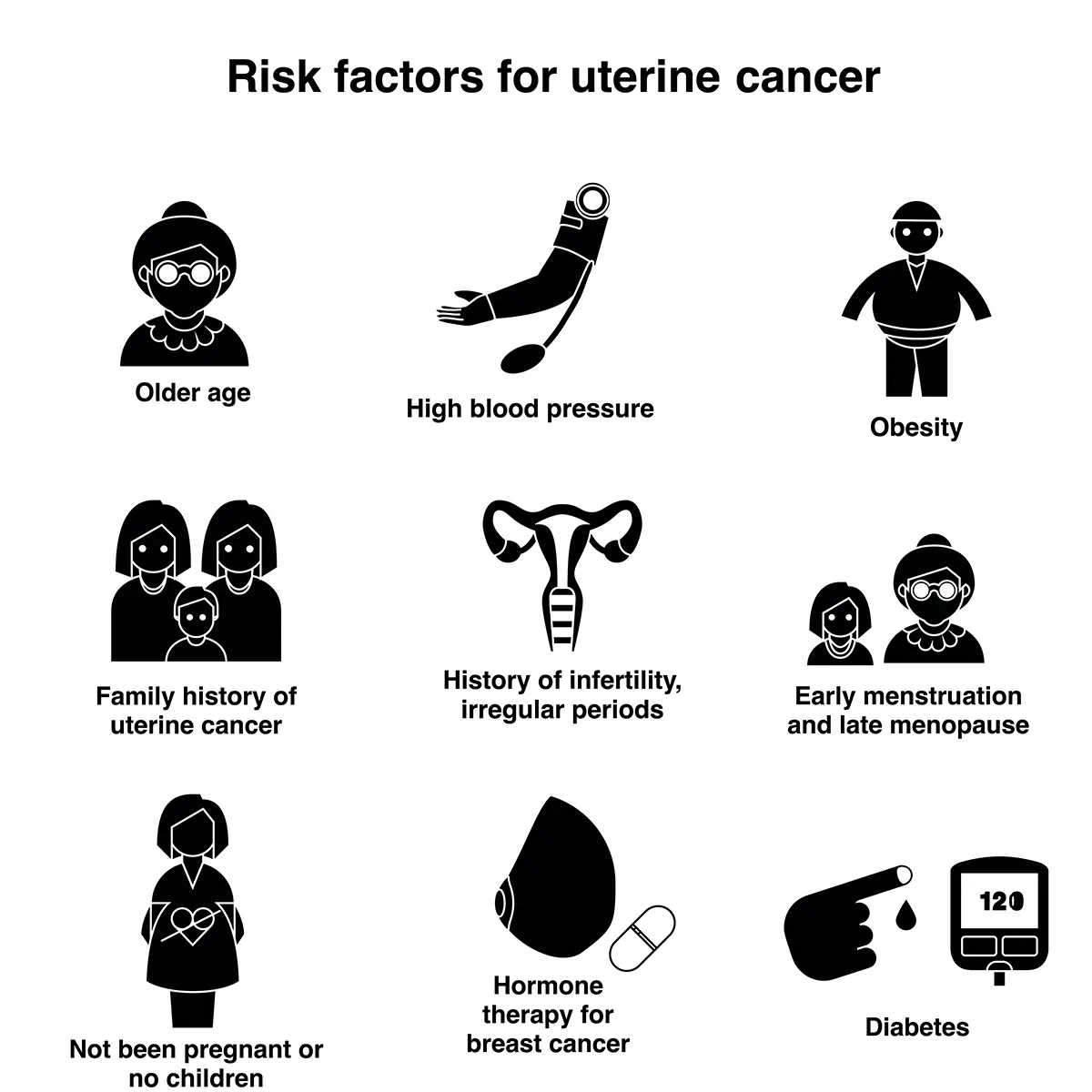Cáncer uterino
Encuentre un especialista en cáncerUterine cancer is one of the most common reproductive cancer types. According to the American Cancer Society, about 3.1% of women will be diagnosed with uterine cancer during their lifetimes.
At Advocate Health Care, our multidisciplinary team of specialists offers a lifelong, comprehensive approach to your care, from prevention and screening to advanced diagnosis and treatment techniques.
Types of uterine cancer
The most common type of uterine cancer is endometrial cancer, which makes up about 95% of cases. It’s so common that medical providers often use the terms interchangeably.
Endometrial cancer grows in the lining of the uterus (endometrium) and is treatable when it’s found early.
Uterine sarcoma is a rarer type of uterine cancer. It grows in the muscle wall of the uterus (myometrium) and is often harder to treat than endometrial cancer.
Síntomas del cáncer de útero
The first signs of uterine cancer are usually abnormal types of bleeding. It's important to talk with your doctor if you experience unusual bleeding or these potential endometrial cancer or uterine sarcoma symptoms:
- Flujo vaginal anormal
- Dificultad para orinar
- Pérdida de peso por causa desconocida
- Lump in the lower belly
What does uterine cancer feel like?
Some potential symptoms of uterine cancer include feelings of pain or pressure such as:
- Pain, pressure or feeling of fullness in the pelvic area
- Dolor durante el coito
- Dolor al orinar

Factores de riesgo del cáncer de útero
Las mujeres blancas corren mayor riesgo de desarrollar cáncer de útero que las mujeres de otros orígenes étnicos. Las mujeres más jóvenes con patrones anormales de ovulación y menstruación también corren mayor riesgo de desarrollar cáncer de útero.
Additional risk factors include:
- Más de 50 años de edad
- Early age of menstruation or late age of menopause
- Using estrogen replacement therapy without progesterone
- Having diabetes or obesity
- Antecedentes de hiperplasia del endometrio
- History of breast cancer, ovarian cancer or colon cancer
- History of taking tamoxifen for breast cancer prevention or breast cancer treatment
- Having polycystic ovarian syndrome (PCOS)
Genetic testing can help identify some of your risk factors for uterine cancer and other types of cancer.
Detección y diagnóstico del cáncer de útero
Si nota algún síntoma inusual, es importante que hable con su médico de atención primaria o ginecólogo. Your doctor can determine if your symptoms are related to uterine cancer or to other conditions such as uterine fibroids.
El flujo vaginal anormal, así como el sangrado vaginal anormal fuera del ciclo normal o durante la menopausia, podrían indicar la necesidad de hacerse pruebas. Algunas de las pruebas que usamos pueden incluir:
- Transvaginal ultrasound, which uses high-frequency soundwaves to create a picture of the uterus and look for changes or tumors.
- Dilation and curettage (D&C) in which the doctor uses an instrument to scrape cells from the lining of the uterus.
- Biopsia del endometrio, que usa un tubo flexible que se inserta en el útero a través del cuello uterino para recolectar una pequeña porción de tejido del revestimiento del útero. Las células se examinan con un microscopio. Si tiene factores de riesgo de cáncer de útero, el médico podría recomendar una biopsia endometrial anual.
- Hysteroscopy, which uses a small scope inserted into the uterus through the cervix to help the doctor see abnormalities or growths.
- Prueba de CA-125, un análisis de sangre que busca niveles más altos de una sustancia que podría indicar la presencia de cáncer.
Uterine cancer treatments & services
Si le diagnostican cáncer de endometrio, contará con algunos de los mejores expertos a su lado. Nuestro equipo trabajará con usted para armar un plan de tratamiento oncológico personalizado. Your plan will include the latest therapies to help slow the growth of uterine cancer cells.
Treatment options for uterine cancer include surgery, radiation therapy, chemotherapy or hormone therapy.
- We may recommend surgery followed by chemotherapy, radiation therapy or a combination of both to destroy additional uterine cancer cells.
- In some cases, we may use chemotherapy or radiation to shrink your tumor before surgery.
- Hormone therapy slows the growth of endometrial cancer cells by reducing hormones in the body. We may use it alone or with surgery and other therapies.
Apoyo a cada paso
Estamos comprometidos a brindarle una atención integral y a proporcionar los recursos que usted y sus seres queridos necesitan para afrontar el diagnóstico de cáncer. You’ll find a full range of free or low-cost cancer support and wellness services to guide you during recovery:
- Programas educativos
- Rehabilitación
- Asesoramiento nutricional
- Asesoramiento espiritual
- Grupos de apoyo
Reciba atención
Le ayudamos a vivir bien. Podemos ayudarle en persona o en línea.